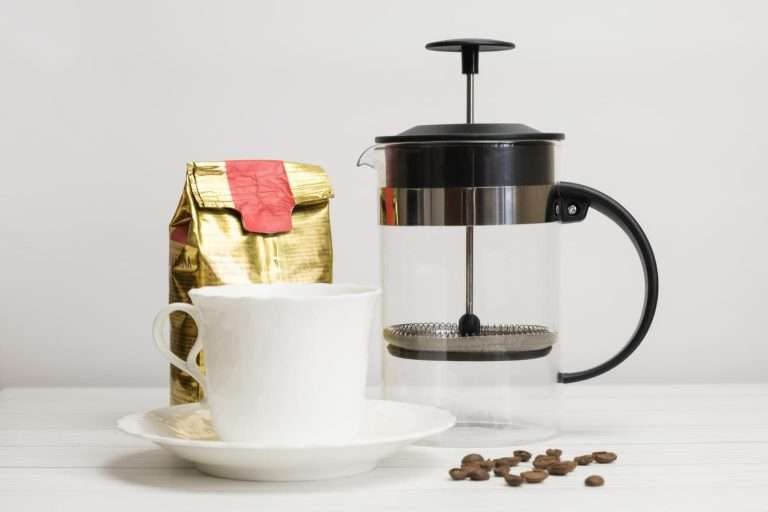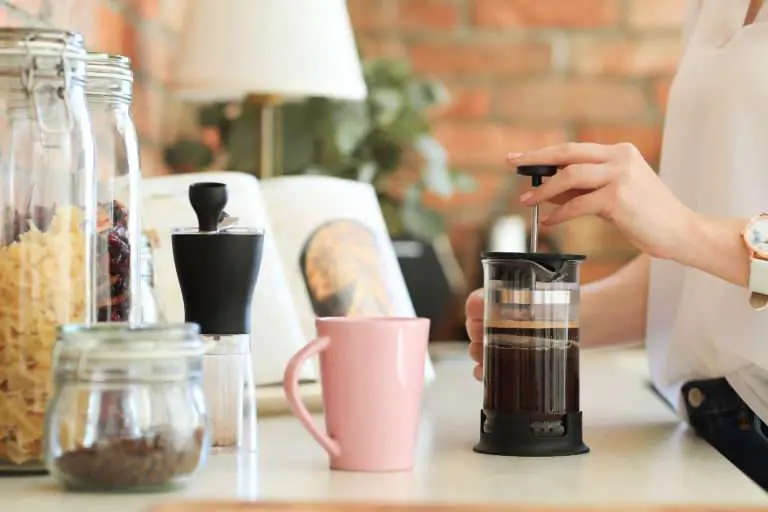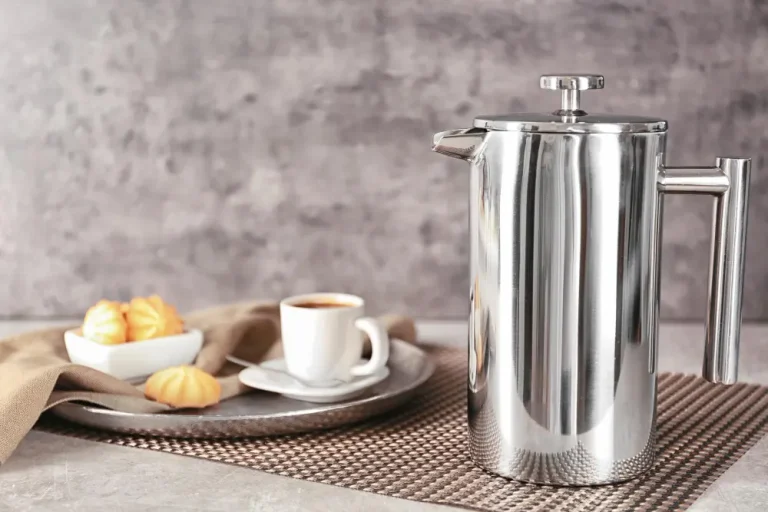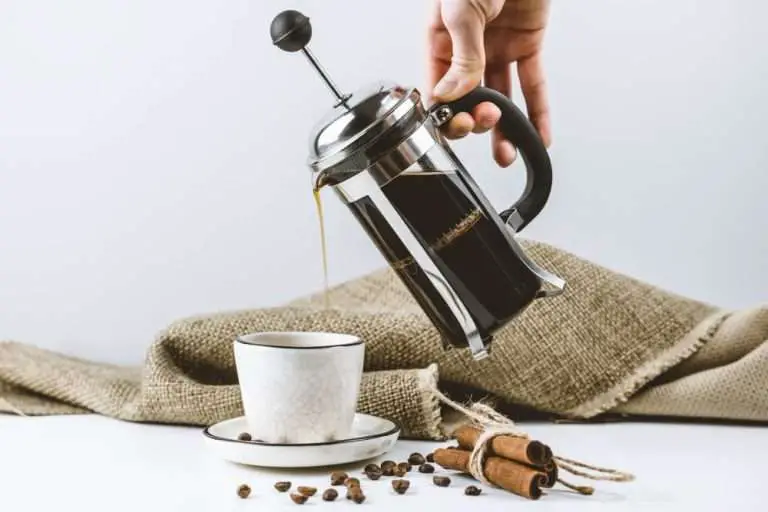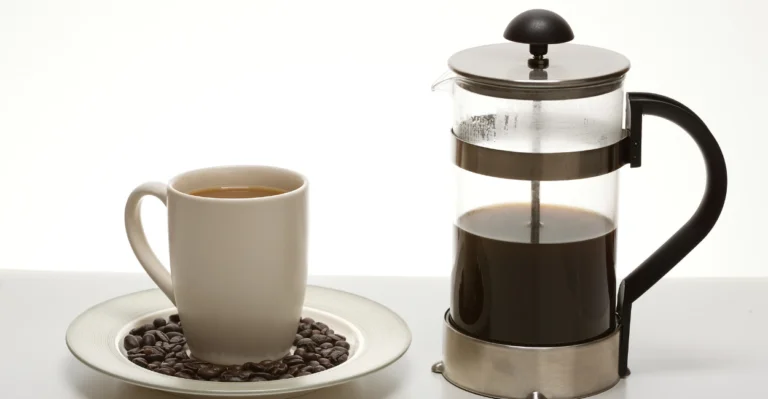Beyond the Hype: 11 Real Disadvantages of French Press Coffee
The disadvantages of French press coffee are important to weigh before using this popular manual brewing method.
While praised for its bold, flavorful cup, the French press does come with some key drawbacks.
- The French press, also called a cafetière or coffee plunger, has been brewing rich, aromatic coffee since the 1850s. Its full-immersion brewing method yields an intense, robust cup many coffee lovers adore.
- In recent decades, the French press has exploded in popularity with coffee connoisseurs who want to highlight subtle flavor notes in their morning brew.
- However, there are some downsides to the French press that should be considered before adding it to your coffee routine.
- Issues like sediment, difficult cleanup, and lack of temperature control set it apart from automated drip or pour over coffee makers.
- By understanding the key disadvantages of the French press, an informed buyer can determine if this manual device is the right choice for their needs.
- ☕️ Sleek and stylish design: Our glass coffee press boasts an elegant and timeless design that will complement any…
1. Sediment in French Press Coffee: An In-Depth Look
Sediment refers to the gritty coffee particles that end up in the cup when brewing with a French press.
The metal filter allows more sediment to pass through versus paper filters.
Research by the American Society for Brewing Chemists showed sediment levels were 75% higher in French press coffee compared to drip on average.
Why Sediment is a Drawback
- Texture – Sediment can make the coffee feel gritty or sludgy rather than smooth.
- Taste – While some argue sediment enhances flavor, it can also cause over-extraction bitterness if the grounds keep brewing.
- Appearance – Sediment clouds the coffee and takes away from its visual appeal.
- Health – Compounds in sediment may increase cholesterol, however small amounts in moderation are unlikely to pose risks.
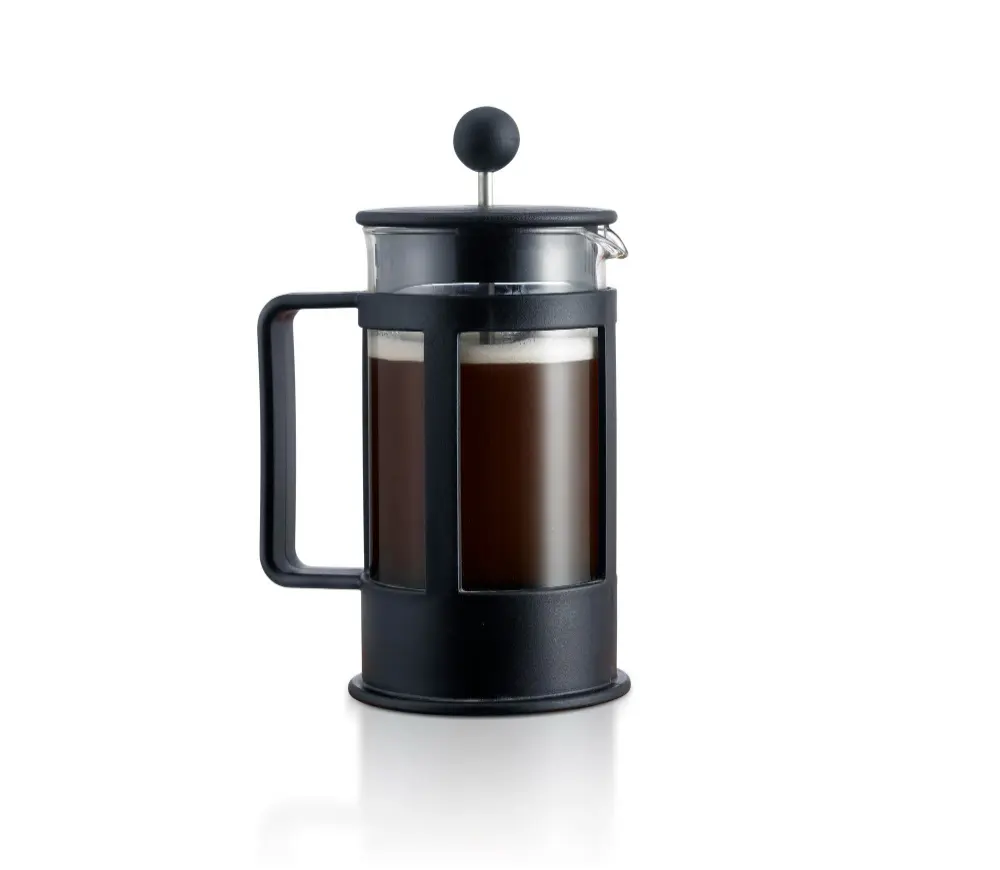
Reducing Sediment
- Use a consistent coarse grind to allow fewer fine coffee particles through the metal filter.
- Double filter the pressed coffee through a fine sieve or filter to catch remaining grit.
- Pour slowly and stop before the bottom when serving where sediment concentrates.
Understanding sediment in the French press allows coffee lovers to avoid it if desired and achieve the optimal brew.
A quality coarse grind and careful pouring technique can minimize gritty grounds in the cup.
- Take it Anywhere – Our rust-free french press-stainless steel-is durable for use while camping, at the office, or…
2. Risk of Over-Extraction with French Press: Finding the Ideal Brew Time
Over-extraction occurs when too many flavor compounds are extracted, making the coffee taste bitter and harsh.
The French press’ long 4-5 minute steep time increases this risk.
Why Over-Extraction Happens
- Extended Brew Time – Even slightly exceeding the recommended time can cause over-extraction with the French press’ full immersion method.
- Uneven Ground Size – Inconsistent grind sizes lead to uneven extraction rates, making it hard to optimize brew time.
- Cooling Water – As water cools over the brew, extraction rate changes, potentially causing over-extraction.
Effects of Over-Extracted Coffee
- Bitter, harsh taste
- Loss of pleasant flavors
- Can cause upset stomach if consuming excess
Achieving Optimal Brew Time
- Use a timer for precision – Letting it steep even 1 minute too long makes a difference.
- Consistent grind size ensures even extraction of all grounds. Invest in a quality burr grinder.
- Preheat the French press with hot water first to maintain temperature.
- Taste test during brewing to find your ideal time based on flavor.
- Take notes on times for different beans to refine technique.
Mastering brew time with the French press requires precision and experimentation, but pays off in a perfectly balanced, non-bitter cup.
3. Heat Loss in French Press Coffee: Understanding Temperature Retention
The French press offers a flavorful brew, but is limited in retaining heat compared to other coffee makers.
Why Heat Loss Occurs
- Material Choices – Glass and thin steel French presses do not insulate well.
- Design Limitations – No heated hot plate or thermal carafe to retain warmth.
- Exposure to Air – Coffee exposed after plunging cools quickly.
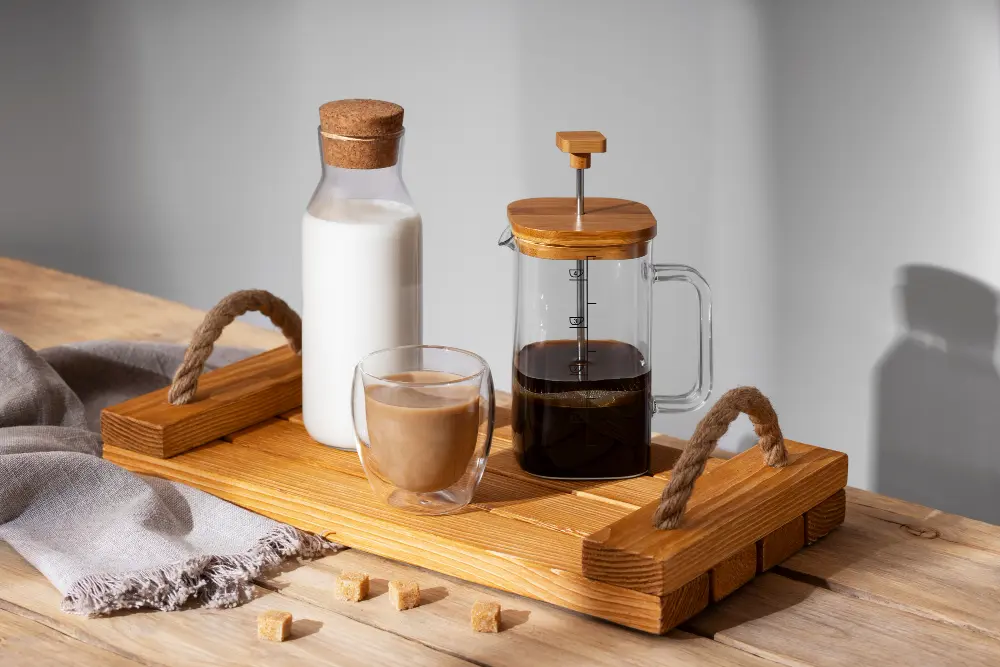
Effects of Heat Loss
- Altered Taste – Flavor profile changes as coffee cools.
- Shorter Enjoyment Window – Coffee drinkers who like it hot have less time before it cools.
Tips to Maintain Heat
- Preheat the French press with hot water before brewing.
- Choose an insulated stainless steel model for better heat retention.
- Transfer coffee to a thermal carafe after pressing if not drinking immediately.
Understanding the French press’s heat loss challenges allows users to take steps to keep their coffee hotter for longer.
Preheating the press and transferring to an insulated container can help maximize enjoyment.
- Note: 1)Too coarse a grind, too little coffee, or insufficiently tamping the grounds before brewing can all lead to…
- Secura stainless steel French Press coffee maker is made from top quality 18/10 stainless steel, both the interior and…
4. Difficult Cleanup of the French Press: Challenges and Solutions
Cleaning the French press thoroughly can be tedious due to its multiple parts. Surveys show it takes 10+ minutes versus 2-3 for drip machines.
Why Cleanup is Difficult
- Grounds residue sticks to the metal filter and beaker.
- Fine mesh filter traps tiny coffee particles.
- Disassembling the plunger, beaker, and filter is time consuming.
Tips for Easier Cleaning.
- Pre-rinse by swirling water to loosen the grounds.
- Use a soft brush designed for French press cleaning.
- Take apart and wash dishwasher-safe components.
- Backflush the filter by rinsing from the underside.
- Do a weekly deep clean and descaling soak.
- Use a sieve when pouring out rinse water to catch grounds.
Oil and Residue Buildup
- Metal filters allow more oils that cling during cleaning.
- Lack of paper filter causes oils to coat beaker walls.
- Leaving uncleaned leads to rancid oil and grounds in future brews.
Regular, thorough cleaning is essential for French press longevity and fresh coffee flavor. Following specific techniques can streamline the process.
5. Coarse Grind Issues with French Press: Achieving the Ideal Grind
The French press requires a precise, even coarse grind to brew properly. This can be difficult to achieve.
Why Coarse Grind is Essential
- Allows for full, even extraction during immersion brewing.
- Avoids over-extraction and resulting bitter, acidic taste.
Challenges in Getting the Right Grind
- Inconsistent grinder output with mix of fine and coarse.
- Blade grinders are uneven while quality burrs are expensive.
Implications of Improper Grind
- Uneven flavor due to varied extraction of different grind sizes.
- Fine sediment slipping through the filter leading to gritty coffee.
Tips for the Perfect Coarse Grind
- Invest in a quality burr grinder with adjustable settings.
- Perform regular grinder cleaning and maintenance.
- Experiment with grind size and brew times to dial in your method.
Achieving an even, coarse grind is crucial for French press but can be difficult without the right equipment. Focusing on quality tools and dialing in your technique is key.
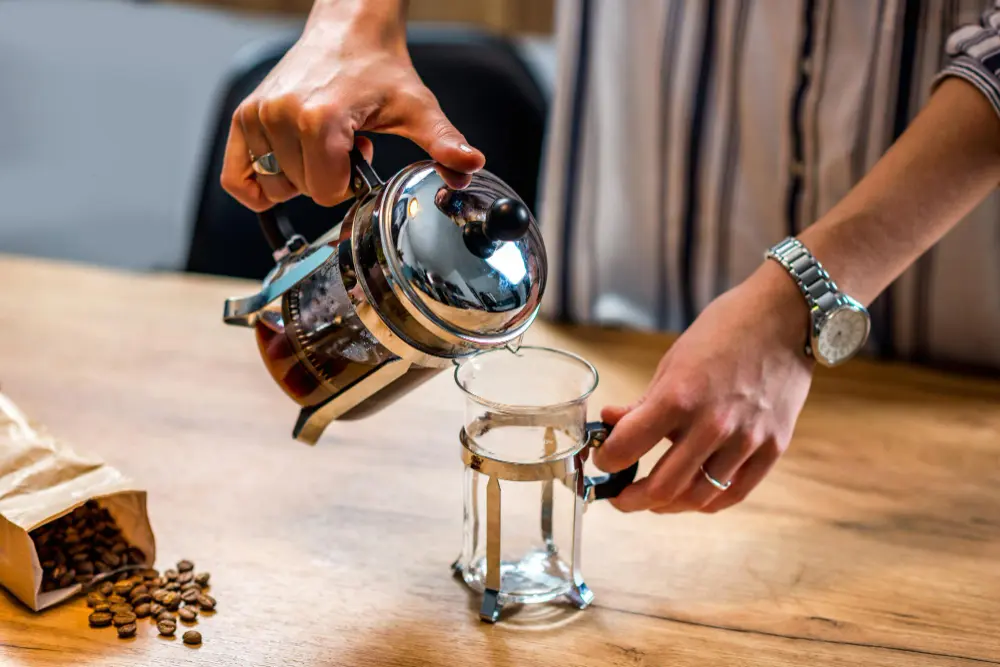
6. Lack of Temperature Control with French Press: The Impact on Brewing
The French press lacks built-in temperature control, which can affect the flavor and consistency of the brew.
Why Temperature Matters
- Water temperature impacts how flavors extract from the coffee grounds.
- The ideal brewing range is 195°F to 205°F. Outside of that risks over or under-extraction.
Challenges with the French Press
- Users must heat water separately then pour into the press. Hard to achieve precision.
- Water starts cooling once poured, dropping temp by the end of steeping.
Effects of Incorrect Temperature
- Too hot causes an over-extracted, bitter taste. Too cool makes coffee flat.
- Inability to ensure the same temp consistently leads to variable flavor.
Tips for Better Control
- Use a thermometer to check water temp before pouring.
- Electric kettles with temperature settings add consistency.
- Preheat French press with hot water first to maintain temp.
- Brew quickly within 4-5 minutes to minimize cooling.
7. Small Batch Size of French Press: Challenges for Larger Groups
The French press is designed for smaller, personal batches. This can pose issues when needing to serve larger groups.
Why Batch Size is Small
- Focus is on optimal water-to-coffee ratio for solo use or couples.
- Ensures consistent extraction and flavor for 1-4 cup batches.
Challenges Brewing for Groups
- Standard presses make 3-4 cups – not enough for gatherings.
- Larger batches require adjusting steeping time which can alter flavor.
Implications of Bigger Batches
- Risk of over or under-extraction if time isn’t adjusted right.
- Guests may have to wait longer as multiple brew cycles are needed.
Solutions for Serving Groups
- Invest in a larger 8-12 cup French press designed for bigger batches
- Pre-brew multiple presses in advance and transfer to thermal carafes.
- Carefully tweak coffee-to-water ratio and steep time when increasing batch size.
With some adaptations, the French press can work for larger groups. But its sweet spot is smaller 1-4 cup personal brews optimized for flavor.
8. Potential Cholesterol Effects of French Press Coffee: Examining the Cafestol Link
The full immersion brewing of the French press may raise cholesterol levels due to higher cafestol oil extraction.
Why Cholesterol is a Concern
- French press coffee contains cafestol, an oil found in coffee beans that can raise LDL cholesterol.
- The full immersion method thoroughly extracts cafestol compared to other brewing methods.
Effects of Cafestol
- Can increase LDL (bad) cholesterol levels, which raises heart disease risks.
- The metal filter doesn’t block cafestol like paper filters used in drip methods.
Implications for Coffee Drinkers
- Those concerned with cholesterol may want to consume French press coffee in moderation.
- People with existing cholesterol issues should consult a doctor about coffee habits.
Minimizing Cafestol Intake
- Alternate with filtered drip coffee or pour over methods to reduce oil intake.
- Run French press coffee through a paper filter after brewing to capture more cafestol.
While French press coffee offers robust flavor, an awareness of potential cafestol issues allows making informed choices for health.
- Say Goodbye to the Café; Enjoy Coffee at Home – Now you can create your own fresh and delicious coffee at home! There…
9. Manual Operation of the French Press: The Hands-On Brewing Experience
The French press requires manual effort from the user, unlike automated drip coffee machines.
What Manual Operation Involves:
- Measuring and adding your own coffee grounds.
- Timing the brew and plunge precisely yourself.
- Steadily plunging the filter down when ready.
Why It Can Be Challenging
- More hands-on effort compared to pushing a button.
- Harder to achieve consistent results time after time.
- Overall process takes longer than programmed machines.
Benefits of Automated Drip Machines
- Convenience of automatic brewing.
- Built-in timers and controls for consistency.
- Ability to brew multiple cups at once.
Embracing the Manual Process
- Allows for experimentation and taste customization.
- Provides a rewarding, personal brewing experience.
- Builds skill in measurement, timing, and technique.
While manual, the French press offers a uniquely customizable brewing ritual that coffee lovers enjoy mastering.
10. Fragile Glass Parts of the French Press: Handling with Care
The glass beakers and carafes used in most French presses are prone to breaking and require gentle care.
Why is Glass Used ?
- Provides elegance and allows watching the brewing process.
- Doesn’t impart any flavors, ensuring pure coffee taste.
Challenges with Glass Parts
- Easily cracked, chipped or shattered from impacts or temperature changes.
- Replacement costs add up over time.
- Broken glass poses a safety risk.
Care and Handling Tips
- Use soft clothes and gentle motions when cleaning.
- Prevent thermal shock by preheating with warm water before boiling water.
- Store carefully in protected locations.
- Consider protective sleeves for extra impact buffering.
Alternative Materials
- Stainless steel offers durability and insulation.
- Plastic French presses are more resilient if dropped.
While beautiful, glass French press parts require careful handling to prevent damage. With some precautions, their lifespan can be extended.
11. Safety Concerns and Counter Space Needs of the French Press
The French press poses some safety risks and takes up more counter real estate compared to other coffee makers.
Safety Issues
- Hot glass and liquids require careful handling to prevent burns or breaks.
- Exposed plunger rod stays hot after brewing, needing time to cool before plunging.
- Broken glass hazards if beaker or carafe fractures under heat stress.
- More precautions needed than enclosed drip machines.
Counter Space Challenges
- Elongated plunger and broad base consume space.
- Doesn’t integrate into cabinetry like built-in appliances.
- Can contribute to a cluttered look in small kitchens.
Tips for Small Spaces
- Opt for a smaller 1-2 cup French press if brewing solo.
- Store in the cabinet when not in use.
- Optimize layout to maximize workspace around it.
The French press requires safety awareness when handling and a bit more real estate. But with proper precautions and design, these drawbacks can be minimized.
FAQs
1. Does a french press let more sediment into the coffee compared to other brewing methods?
Yes, the French press metal filter allows more coffee sediment and fines to pass through into the final brew compared to paper filters used in drip coffee makers and pour over methods. This can result in a gritty, sludgy texture.
2. Is french press coffee more acidic or bitter compared to other methods?
The French press’s full immersion brewing can lead to over-extraction, causing the coffee to taste more bitter. Proper technique is required to avoid over-extraction bitterness. Acidity depends on the coffee beans used rather than the brew method.
3. Why is French press coffee bad for cholesterol?
Yes, French press coffee contains an oil called cafestol that can raise LDL (bad) cholesterol levels over time.
4. Is french press coffee more difficult or time consuming to brew?
The French press requires more hands-on effort and time to manually measure grounds, boil water, time the brew, and plunge the filter. It is not automated like drip machines. This makes it more labor intensive.
5. Do french presses make smaller volumes of coffee per brew?
Yes, standard 3-4 cup French presses cannot make large batches well. Drip coffee makers can brew full pots of 8-12 cups more efficiently. The French press works best for 1-3 servings per use.
Conclusion
As discussed, the disadvantages of the French press are important to weigh. Key issues to consider are sediment, heat loss, lack of temperature control, difficult cleanup, and safety risks.
However, French press fans cite the strong, bold flavor as a major advantage that outweighs the drawbacks for them personally.
The full immersion brewing highlights subtle tastes lost with automated drips.
The French press disadvantages largely center around its manual operation, multiple parts, and lack of temperature regulation. This results in gritty coffee, fast cooling, and inconsistent results.
Yet many enjoy the hands-on process and rich flavor of French press coffee. Understanding both the pros and cons allows individuals to decide if its downsides are deal breakers for their needs and preferences.







